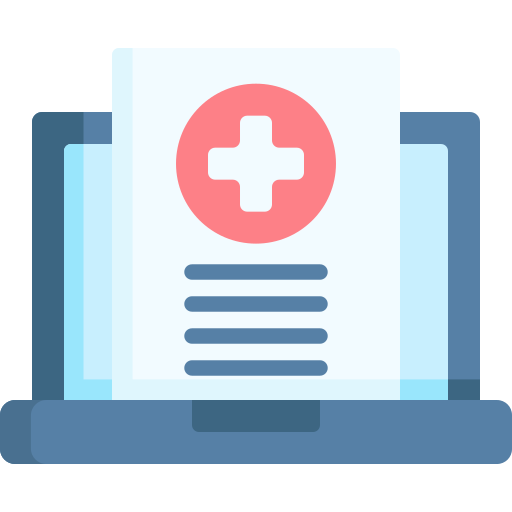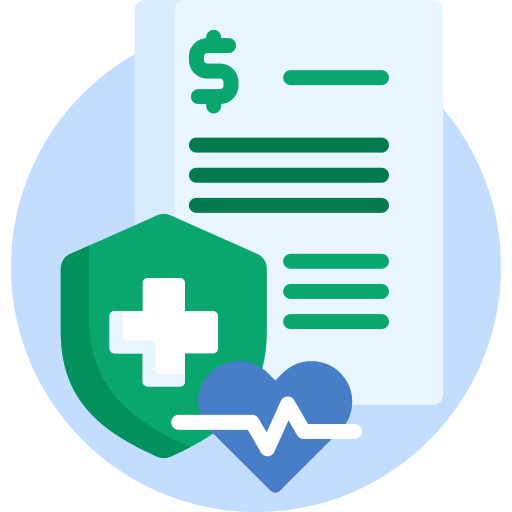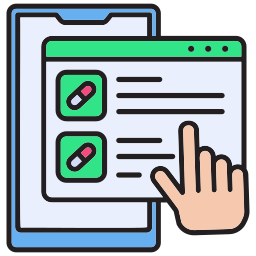EMR vs EHR is a decade-old topic that makes you wonder about how different they are from each other. In the digital age, the healthcare industry has increasingly relied on electronic records, transforming how patient information is managed. According to McKinsey, digital innovation will boost the healthcare sector's total value to $350-410 billion by 2025.
Gone are the days of trying to decipher a doctor's handwriting on paper charts. Now, it's all about pixels and data. But while both EMR and EHR have made their mark, understanding the difference can feel like trying to decide between a smartwatch and a fitness tracker—they seem similar, but each has unique features that cater to different needs.
For healthcare professionals and patients alike, knowing the distinction between EMR vs EHR is more than just tech jargon. It's about grasping how their medical history is recorded, accessed, and shared.
Imagine asking your grandma to explain the difference between Facebook and Twitter—both involve social interaction, but one is more about showing off vacation photos, while the other is where you go to check what's trending. In the same way, understanding EMR vs EHR can help navigate the healthcare system more efficiently, ensuring everyone is on the same digital page.
What is an EMR?
An EMR is like your doctor’s sticky notes on steroids, neatly packed into a digital file. The EMR market is projected to reach USD 42.10 billion by 2029, growing at a CAGR of 5.11% from 2024-2029. Picture this: you walk into a doctor’s office, and instead of the usual paper chart that’s seen better days, your entire medical history is right there on a computer screen, legible and organized.
An EMR system is a digital version of the paper charts in a clinician’s office. It includes your medical history, diagnoses, medications, treatment plans, immunization dates, allergies, radiology images, and lab results—everything your doctor needs to know about your health journey stored in one tidy digital file.
However, much like how your old phone couldn’t do more than make calls and send texts, EMRs have their limitations. For starters, they’re primarily designed for use within one healthcare organization, meaning if you switch doctors, your new doctor might not get the full picture. EMRs also aren’t exactly social butterflies when sharing data across different systems, leading to awkward situations where your medical records need to be manually transferred.
While EMRs are great at storing information, they don’t come with the bells and whistles needed for sharing data in a way that helps other healthcare providers coordinate your care. It’s like having a high-tech refrigerator that keeps your food safe but doesn’t help you restock.
What is an EHR?
An EHR, or Electronic Health Record, is like that one friend who remembers everything—except this friend is a digital system designed to keep track of a patient’s entire medical history. EHR market size is expected to be around USD 45.9 billion by 2033, up from USD 27.1 billion in 2023.
Think of it as the digital vault where your medical records live, from the time you scraped your knee in kindergarten to your last annual check-up. Unlike an EMR, which is more like a doctor’s personal notepad limited to a single practice, an EHR is a collaborative playlist that can be shared across multiple healthcare providers. It’s designed to store data and make it accessible wherever you go, whether you're seeing your primary care doctor or getting a second opinion halfway across the country.
The key components of an EHR system go beyond just a digital filing cabinet. It includes everything from patient demographics, medical history, and test results to more sophisticated features like medication management and appointment scheduling.
An EHR doesn’t just keep your doctor in the loop; it connects the dots between all your healthcare providers. This means when you visit a new specialist, they won’t need to decipher your medical history like it’s a crossword puzzle. Instead, they can see the whole picture—medications, past procedures, allergies—all at once.
This interoperability level and patient-centered care sets EHRs apart from their more limited cousin, the EMR. So, while an EMR might know your last prescription, an EHR knows your entire health story and is ready to share it with the world—well, at least with your healthcare providers.
Related Read - Benefits of Interoperable Healthcare Data for Patients
Key Differences Between EMR and EHR
Imagine EMRs and EHRs as two siblings who grew up in the same house but took slightly different paths in life. EMR, the older sibling, is the electronic version of the paper charts you'd find in a doctor’s office. It’s great for keeping track of medical history within a single practice. Think of it as that neat, organized notebook you used in school—helpful and reliable, but only covers one subject at a time. EHR, on the other hand, is like the overachieving younger sibling who knows everything about everyone.
It’s a digital record that includes everything an EMR does and shares that information across different healthcare providers. Imagine having a magical binder that updates itself and goes with you from one doctor’s office to another. No more filling out the same forms over and over—EHRs have got your back.
So, why does EMR vs EHR matter? Well, when it comes to patient care, the difference between an EMR vs EHR can be like night and day. An EMR might tell your doctor what happened during your last visit, but an EHR will let them know what’s been happening with your health no matter where you’ve been or who you’ve seen.
This means fewer medical errors, better coordination between healthcare providers, and ultimately, a healthier you. Now, let’s dive into a quick comparison between EMR vs EHR to see how these two siblings stack up against each other.

EHRs aren’t just more detailed than EMRs—they’re like the Swiss Army knife of patient records. They provide a panoramic view of your health, ensuring every healthcare provider is on the same page. This interconnectedness means your care is better coordinated and your treatment is more effective, making a significant difference in patient outcomes.
Benefits of EHR Systems
EMR vs EHR is quite tough but EHRs make managing patient information a breeze. EHRs cut out the chaos, helping healthcare providers keep track of patient history, medications, and treatments all in one digital space.

Here are a few benefits in this EHR/EMR blog you might find useful to know:
1. Improved Patient Care and Outcomes: The EHR Advantage
When it comes to EHR integration, the impact on patient care is like switching from dial-up to fiber-optic internet. Suddenly, everything’s faster, clearer, and more connected. With EHRs, healthcare providers have all the patient information they need in one place. No more playing telephone with your health history. This means fewer mistakes, quicker diagnoses, and treatment plans that make sense the first time around. It’s like your doctor finally got glasses and can see the big picture—only your health they’re focusing on.
2. Boosting Efficiency and Productivity: No More Paper Trails
Picture your doctor’s office without stacks of paper files. That’s what EHR integration promises—a streamlined, digital system where information is just a click away. EHRs make scheduling, billing, and prescribing as easy as binge-watching your favorite show. With everything organized and accessible, healthcare providers can focus on what they do best: caring for patients. And if there’s one thing we all appreciate, it’s not spending hours filling out forms that no one will read again. Another point for EHR in the battle of EMR vs EHR!
3. Better Communication Among Healthcare Providers: The Group Chat You Need
We’ve all been there: explaining your medical history to yet another specialist, only to forget if your right or left knee needed surgery. EHR integration is like a group chat for your healthcare providers—everyone’s in the loop, sharing information instantly. Whether you’re seeing a dermatologist or a cardiologist, EHRs ensure everyone knows what’s up with your health. It’s like having your megaphone, minus the shouting, and your care team pays attention.
4. Increased Revenue and Reduced Costs: Saving Money with EHRs
Switching from paper records to EHRs might seem expensive, but it’s the kind of investment that pays for itself faster than you can say “medical billing.” EHR integration reduces administrative costs by cutting out the middleman—goodbye, transcription services, and storage fees. Plus, with fewer errors and faster billing, practices can see more patients and keep the revenue flowing. It’s like finding out your favorite snack is on sale—savings that keep giving.
5. Staying Compliant with Regulations: EHRs Have Your Back
Navigating healthcare regulations can feel like tiptoeing through a minefield, but EHRs are like your trusted guide; for instance, you can think of Cerner or Epic, which help you ensure you stay on the safe path. With EHR systems, healthcare providers can easily meet the latest requirements, avoiding those pesky penalties for non-compliance. Think of EHR integration as the friend who reminds you to pay your taxes on time—helpful, reliable, and essential.
6. The Future of Healthcare: EHRs are Here to Stay
EHRs are the future of healthcare. As we move towards a more digital world, EHR integration will become more critical. From telemedicine to AI-driven diagnostics, having a robust (okay, sturdy!) An EHR system in place is key to staying ahead. Think of it as upgrading from a flip phone to a smartphone—there’s no going back, and the future looks pretty exciting with all that new tech at your fingertips.
Challenges and Considerations
Navigating the EMR vs EHR debate feels like choosing between coffee or tea. Both have merits, but picking the wrong one might leave you jittery or longing for something else. Let’s get to know about the challenges and considerations of EMR vs EHR.

1. Implementation Costs and Challenges
Switching to an EMR or EHR system can be as pricey as upgrading from a flip phone to the latest smartphone. The sticker shock alone might make you reconsider. From purchasing the software to training your team, the costs of EMR vs EHR pile up faster than you can say, “Was this in the budget?” And let’s not forget the hidden expenses, like unexpected system upgrades or the inevitable tech support calls when someone accidentally hits the wrong button. Oh, and did we mention the joy of migrating all that data? Imagine packing for a move to a new house—now multiply that by a thousand medical records.
2. Data Privacy and Security Concerns
Think of your EMR vs EHR as a digital vault for patient information. Now imagine that vault has a neon sign blinking, “Hackers Welcome!” Protecting patient data is crucial, but it’s no walk in the park. Keeping that data safe requires more than just a strong password (yes, “1234” is not a good choice). You’ll need encryption, firewalls, and a team of IT experts who sleep with one eye open, watching for potential breaches. And if you think that sounds stressful, just wait until you see the fines for non-compliance.
3. The Need for Ongoing Training and Support
Learning a new EMR or EHR system can be like trying to assemble IKEA furniture—without the instructions. It’s not just a one-time setup. Staff will need ongoing training to stay up-to-date with system updates and new features. Imagine your tech-averse colleagues suddenly having to navigate a new interface; the confusion alone could warrant its IT support hotline. And let’s face it, when was the last time someone enjoyed sitting through a software training session?
4. Interoperability Issues
If only all systems could just get along. Unfortunately, making your EMR or EHR play nice with other systems isn’t always easy. It’s like trying to force two rival sports teams to share the same locker room—awkward at best, disastrous at worst. Interoperability, or the ability for different systems to work together, is crucial. But achieving it can feel like wrangling cats. Your system might speak one language while another hospital’s system speaks another, leading to a game of broken telephones with patient data stuck in the middle.
5. Resistance to Change
No one likes change—especially not the kind that involves altering the way they do their job. Convincing your staff to embrace a new EMR or EHR system might feel like trying to get a cat to take a bath. Expect some pushback, a few grumbles, and perhaps even a minor revolt. Some staff members might long for the “good old days” of paper charts and file cabinets. But in today’s digital age, those file cabinets are better suited for storing snacks than patient records.
Related Read - The Interoperability Challenge in Healthcare
How Healthconnect Copilot Can Negate The Limitations Of EHRs/EMRs
The ongoing debate on EMR vs EHR is like comparing apples to oranges. EMRs are like a nifty filing cabinet that stays put within your practice, while EHRs are more like an open book that travels with the patient, letting various healthcare providers contribute to the same story. Both have their strengths and weaknesses and integrating them into a smooth system can be like trying to mix oil and water. The challenge often lies in ensuring all the systems talk to each other without starting a family feud over data.
Enter HealthConnect CoPilot, an important player in this tech world. Think of it as the referee in the EMR vs EHR matchup, ensuring that every data point interacts smoothly with the rest. It swoops in to address the quirks of EHRs and EMRs by ensuring that data integration doesn’t turn into a circus. It’s like having a personal assistant who knows exactly how to handle your paperwork without ever letting the messiness of disjointed systems spill over. With HealthConnect CoPilot, the tech often stumbles through and feels more like a well-rehearsed dance.
- What’s the main difference between EMR and EHR?
Think of EMRs as your digital filing cabinet for patient records—great for internal use but not very social. EHRs, on the other hand, are more like a patient’s online social profile, allowing for sharing and collaboration across different healthcare providers.
- Do EMR and EHR serve different purposes in a practice?
Absolutely! EMRs are best for tracking patient data within a single practice, like a trusty old notebook. EHRs, however, are designed to share that info across the healthcare universe, making them more of a global networking tool.
- How does EHR integration improve healthcare?
Imagine trying to throw a party without a guest list—chaos, right? EHR integration is like having an organized guest list that connects different healthcare systems, making patient care more coordinated and less like a game of telephone.
- Can you give an example of how EMR vs EHR impacts a patient’s experience?
Sure thing! If your doctor uses an EMR, they might not know what’s going on with your care outside their office. With an EHR, it’s like your medical history has a VIP pass to all your healthcare providers, ensuring they’re all on the same page.
- What should I look for in an EHR/EMR blog?
Look for blogs that don’t just list features but also explain them with real-world examples. A great EHR/EMR blog will make you chuckle while enlightening you on the quirks of different systems, turning dry facts into entertaining reads.

Pravin Uttarwar, CTO of Mindbowser
As the CTO of Mindbowser, a healthcare-focused software development company, I am dedicated to delivering cutting-edge digital solutions that transform patient care and operational efficiency. With over 16 years of experience and as an MIT alumnus, I specialize in healthcare interoperability, FHIR-compliant systems, and AI-powered platforms, crafting scalable products and architectures tailored to the unique needs of healthcare providers and enterprises.
I have spearheaded the development of over 100 products and platforms, guiding them from concept to full-fledged solutions. My expertise extends to scaling remote tech teams, driving EHR integrations, and building secure, cloud-native healthcare solutions. By shaping technology visions and roadmaps, I help clients achieve long-term growth and success in the rapidly evolving healthcare landscape.
HealthConnect CoPilot enabled us to access real-time patient health data through integration with Apple HealthKit, enhancing care delivery while maintaining HIPAA compliance. This led to personalized care and improved outcomes for patients.

AI-enhanced Obstetrics Clinical Decision Support Platform
HealthConnect CoPilot's integration with Epic's Hyperspace has transformed our workflow. Automated post-delivery examinations and HL7 protocol use ensure accurate updates to Epic. Their expertise empowers informed decision-making in childbirth

Top Provider for Customized Healthcare Solutions
HealthConnect CoPilot's helped us to integrate with leading tracking devices such as Apple Watches and Fitbit. This integration enables effortless syncing of health data, providing users with real-time insights displayed directly on our flagship products: smart mirrors and digital calendars.

A Provider of Customizable Display Solutions
Post a comment Cancel reply
Related Posts
Healthcare Integration: The Understanding & Its Impact in Healthcare
Healthcare integration refers to connecting various systems, applications, and data sources within the healthcare ecosystem…
Value-based Care vs Fee-for-Service
Healthcare payment systems can feel a bit like deciding between paying for each item on…
Checklist for EHR Integration in the Healthcare System
EHR integration in the healthcare system refers to the seamless connection of EHR systems with…
Integrating FHIR and Genomics: How AI is Shaping the Future of Medicine
AI is transforming the way medicine approaches personalized healthcare, particularly through genomics. By analyzing vast…
The Road to Value-based Healthcare: How Interoperability Paves the Way
Interoperability in healthcare refers to the ability of different health information systems to exchange, interpret,…
How HealthConnect CoPilot Ensures Patient Data Security and Privacy
In the complex world of healthcare, managing patient data is like walking a tightrope—one wrong…










